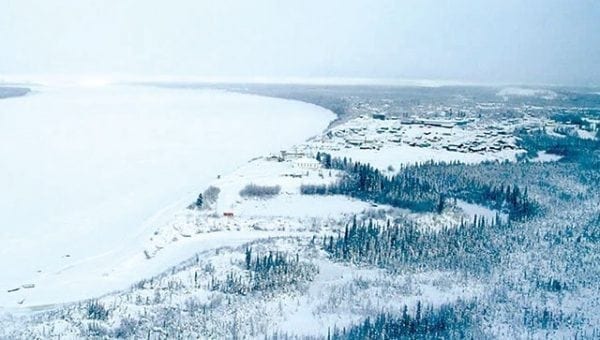Just before Christmas, the joint venture behind the Mackenzie Gas Project announced the project was finally, officially dead. “Thank God they put it out of its misery,” says oil and gas consultant Doug Matthews.

Now based out of Calgary, Matthews has spent the last 38 years working and living around the NWT, much of those spent with the GNWT. As a commentator and columnist, he’s been outspoken in boosting the NWT’s resource industries—so his current position on oil and gas might surprise some.
“There was a lot of complaining about the regulatory process but to be perfectly frank, fracking introduced so much more natural gas to the market that the price collapsed and the project simply would not have been economical,” says Matthews. “It’s really just that simple, I’m afraid.”
He says the price of oil has dropped to $3.50 per thousand cubic feet (MCF) “on a good day” and for a project whose financing centred around prices more in line with $10 per MCF, the project would have been in tatters even if it had already been built and in use.
“In an odd way, just as Justice Berger did back in the ‘70s, the joint review panel, I think, did the producers a favour by keeping them out of the market,” he says.
Especially strange for an endeavour that never actually panned out, the Mackenzie Gas Project has been the highest-profile venture ever undertaken in the North’s short modern history.
When initially proposed in 1970 by the federal government, it met quick opposition from aboriginal groups in the territory. A young judge named Thomas Berger was tasked with touring 35 Northern communities over three years to assess the environmental and social impacts such a project could have.
Berger’s report, released in 1977, recommended the project be shelved for 10 years. It also helped initiate, concurrent with growing political organization by groups such as the Indian Brotherhood, a recognition of Indigenous rights in Canada that has continued to gain momentum since.
Matthews says this was a blessing in disguise for the oil companies that would have built it, as the oil market then crashed in the ‘80s.
The Mackenzie Gas Project was revived in 200 by the Aboriginal Pipeline Group, a consortium involving the Sahtu Dene, Gwich’in and Inuvialuit, partnered with a joint venture involving Imperial Oil Resources Limited, ConocoPhillips Canada and ExxonMobil Canada.
The project was finally given regulatory approval in 2010, with the condition that construction begin by 2015. Imperial Oil then asked for and received an extension on that deadline to 2022.
On Dec. 22, Imperial Oil and the other partners announced the project was finished.
“We recognize this is a disappointing day for the people of the North,” stated Theresa Redburn, senior vice-president of commercial and corporate development at Imperial Oil. “This is a disappointment to Imperial and the other members of the joint venture, as well.”
Redburn thanked the project’s supporters in the NWT and said there is potential for a future in oil and gas for the territory—“given the right economic and regulatory conditions.”
Matthews doesn’t see those aligning in the foreseeable future.
“I’ve been pro-development my whole career in the North … always arguing for development, supporting pipelines and whatever,” says Matthews, “but I do think that the world has just changed so much in the last five years, if not 10, that the future for oil and gas in the NWT, that is for exploration and production, is far from rosy.”
He cited recent examples such as Shell divesting oil sands interests in Canada earlier last year. “if the oilsands aren’t attractive, what are you going to do with the Beaufort?”
“There are just too many changes taking place in the whole energy world these days,” says Matthews. “The NWT has the farthest [oil] from market and one of the more expensive areas for development—it’s one of the first ones to get left out of the future.”